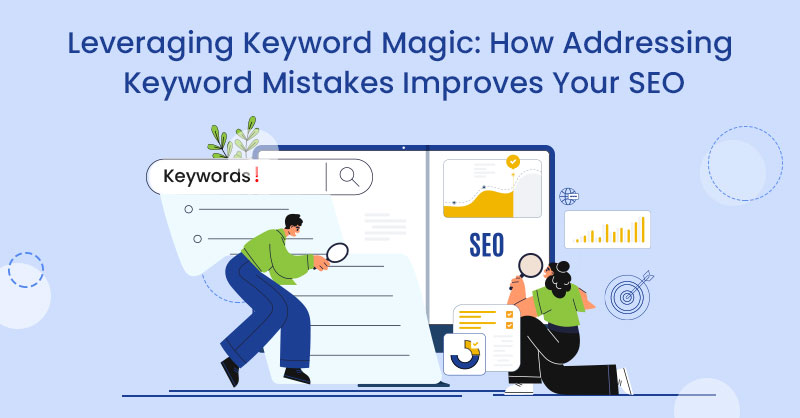Want to break through to International SEO markets? This is your definitive guide to International SEO. This will be a simple guide with steps you can use to optimize for the international market places.

Choose Your Domain Name
This is your first step. There are country-specific TLD’s and generic top-level domain names. For example, a country specific domain name to France might be domain.fr, and a generic example might be domain.com, domain.org, or domain.biz etc.
If one of your goals is to create a multi-lingual website then you’ll want to go after a generic TLD (gTLD) domain name. There are a few exceptions to the rule which we will discuss here shortly. Don’t worry we’ll clear the fog!
Related Posts:
How to Strengthen Your Geo-Targeted SEO Campaign
Five Ways To Build Links For Local SEO
Choosing Your URL Structures
The information for this is out there so we are not going to go into too much depth here, but do keep in mind that paying special attention to your URL structure as part of your international SEO campaign is crucial. It will either save you hours upon hours of resources or cost you. You’ll want to research and do this properly for SEO purposes from the beginning.
Directories within Your Domain
You are going to want to have 1 “general” or “generic” domain (gTLD) and keep every language in a different directory. You can also split the directories into country codes.
Example: Directories By Language
i.e. domain.com/en/
i.e. domain.com/de/
ie. Doain.com/fr/
Directories By Country Codes
i.e. domain.com/en-us/
i.e. domain.com/en-gb/
Should I choose “country” specific directories or “country code” specific?
Country specific directories would be my first choice as optimizing for one domain or directory would have a positive SEO impact for your site as a whole. Your /en/ folder can directly or indirectly have a positive impact from your /fr/ folder, etc. Also keep in mind that one domain means one server location. As Google’s algorithm’s settle, you’ll want to keep this in mind. Load times may be a little slower, but would for the most part not be noticeable.
Using Country Code TLD’s (ccTLD)
When you are targeting multiple languages to rank in multiple search engines such as google.fr, google.de, google.mx, etc. you may choose a tactic to have each language on a separate ccTLD.
Example ccTLD’s:
Domain.co.uk
Domain.fr
Domain.de
If you are targeting the U.S.A. a .us name may be used, although you are going to have to keep in mind that this tactic is mostly reversed for the US citizens and you are going to want to simply purchase or acquire a .com domain name. After registration you can go ahead and insert the domain into Google Webmaster Tools to target the users within the U.S. of A.
Some positives to this method are you would get a clear distinction between the locations. You would get faster load speeds in the local region you are targeting. Local search users would trust this method the most as it is easily recognizable for their home country or region. Google nor the user will be confused as to which site to rank, visit, or any confusion for the end-user.
Some “not so positive” issues would be the authority of 1 domain will not pass over to other domains between your sites. If you have a large budget, this option still might be for you.
Using Subdomains
Lastly, we are going to discuss utilizing multiple-subdomains. This option will allow us to have a unique subdomain for each user type.
Example Subdomains:
En.domain.com
mx.domain.com
de.domain.com
Though there are no pro’s from what we can see to verify and validate that this is a viable option, we did want to list it here.
The not so beneficial reasons to convince you to choose another option is, again, there are no pro’s from what we can see. Secondly, little to no authority will flow from subdomain to subdomain.
Translating Your Text
This is your key to ranking in the local users search engine. Again, Translating your text is key to your International SEO success. Below we will discuss 2 viable options to get your content translated.
Translation Option 1: Hiring A Professional
Unless you have one on staff, you are going to have the option of hiring or outsourcing this project. A few good resources are websites like elance.com, odesk.com, craigslist.org, and many others.
Rates for a professional translator to pump out your content would run at about the 1 cent per word marker. Keep in mind a 100 page site, 500 words each page, translated into 5 languages would set you back about $2,500. Costly, but often necessary.
Translation Option 2: Using Google Translate
Though Google translate would not be your ideal option it is a simple yet (sometimes) effective tool for translation. You can translate into about 65 other languages, but we question the quality. As with any automated tools you are going to have issues. If you are on a tight budget and cannot afford to hire a professional, this might be the option for you (to start out).
Language Markup
Though outdated, this is something you need to incorporate into your coding. You want to tell Google what language the page is written in, and tells Google the exact URL’s of language variations are available on your website.
Avoiding Duplicate Content with “hreflang”
“h” a what? ‘hreflang’ is a link element that go inside the section of a page just like canonicals or favicons. The end users cannot see this coding as it is just for Google and the robot crawlers. You are going to want to use this attribute on any page that has a language variation.
Example ‘hreflang’ tag:
Let’s say you’ve used a directory type structure for the classification of your different languages. Let’s say you’ve chose 3 languages to target which were English, French, and Spanish (mx).
www.domain.com/en/index.php
www.domain.com/fr/index.php
www.domain.com/mx/index.php
Remember to not include the canonical tag with this. You want to use either the ‘hreflang’ markup or a canonical markup. ‘hreflang’ will help you avoid any duplicate content issues, so when you decide to use ‘hreflang” tag you’ll want to remove the canonical tag associated with each.
Discovering Profitable Keywords Through Research
Now that we have a solid structure in place, or at least an understanding of what it will take we are now at the keyword research phase. We are going to touch on one tool that is free, effective, and versatile for our needs. Google’s Keyword Tool is our tool of choice for this project.
Pay special attention to the “language” option, and [exact match] option. A MUST to get accurate figures is to choose the proper language and match option. Broad match can be used for PPC on an as-needed basis, but for SEO you are only going to want to pay attention to the Exact Match keyword option.
SEO’ing Your Onpage
Keep your content identical across the board (for the most part). Try and keep the same meanings, ideas, and points very close to each other.
Some Onpage Notes Most Webmasters Forget:
Don’t forget to section each language off. For example, if a user lands on your domain.com/fr/ directory, make sure all the links, pages, images etc. all match up and point to the /fr/ directory. This is a common mistake I see happen often.
Secondly, don’t forget to include a link, drop down menu, or some other easily accessible option to change languages for the end user. Often times there are IP conflicts, technical confusion on your servers part, or the user simply prefers another language. Images of flags to their respective country often help with this.
Properly utilizing ‘alt’ attributes on your imagery
Though cumbersome, I would highly suggest re-uploading each image for each language and enter the valid attributes as necessary and pertinent to the respective language.
Uniform Resource Locators
Keep in mind that Google speaks ALL languages (for the most part). Ensure you customize each URL specific to the targeted language and search engine. Follow the same rules you follow with English grammar and URL distinctions as to not trigger any spam or algorithm flags.
Get A Local Address
Though not a must have, it is definitely something great to add to your arsenal. I might suggest a virtual office or mail box in the area to get verified with Google listings. Also, on a side note you’ll want to get a local phone number as well. They cost about $5 monthly to forward to your normal phone lines.
LINK BUILDING!
Link building and onpage SEO is like peanut butter and jelly. They just go together. In essence you can’t have 1 without the other. Think of onpage SEO as your building blog for link building offpage SEO. You’ll want to maintain the same practices as you normally do for link building, except for the following minor tweaks:
Get links from ccTLD’s that are relevant
Let’s say you are trying to get ranked for a Spanish term on your website, you are going to want to obtain links from .mx domains that are also hosted in Mexico.
Please do not get in the habit of rejecting links, but by all means accept any great links you can acquire. Do keep in mind that ccTLD’s will want to be a focus of your link building acquisition campaign.
Vary Anchor Text
I know, you’ve heard it a million times. Though, since we are utilizing an international SEO campaign strategy, you’ll want to consider mixing the language of your anchors as well as exact, domain, generic, and “click here” type links for good measure.
3 Common International SEO Mistakes
Translating via JavaScript
Don’t do it. You must keep your international content on separate pages of your website and utilize HTML text.
Landing Pages
Often times you are going to want to steer clear of these pages. Why? You don’t want to confuse or offer the end user too many options. The last thing we want to do is have your hard earned visitor bounce off your site only to visit your competitors. The visitor should always land on the correct page according to their language(s) etc.
Redirections via Geo Location Based IP’s
Listen, as stated above your server does not always know what is best for the users. Someone might want a French translation but is in the United States and vice versa. You don’t want to force anything on the user. Alternatively you can use something a little more subtle such as a banner, a drop down menu at the top right of your website, or a subtle notice letting them know of their language options. Through most of the time, if you followed the above steps correctly you will notice almost all of your users have landed on the correct page via your International SEO efforts.






on
Very informative article!
Could be a typo but “Doain.com/fr/” should be “Domain.com/fr/,” I think
on
Great insight, really helpful advice. I’d been searching for something such a guide for a long time now, and this is just perfect.
I can now start my own business. Thanks a lot!
on
Very useful information, thanks for sharing this Henry.
on
Very good advice on how to position your internet business in an international market.
on
Thank you very much for this precious information.I think this guide will help me a lot on building my website in the future.
on
I have been wondering about international SEO for a long time. The article is simple, easy to read, and anyone can understand it. I am going to try some of the tips you provided. Thanks for sharing!
on
Very useful information. There are some new things I have learned regarding SEOing multi-lingual sites. Thank you.
on
Very interesting guide.. I have a friend who could use this information.